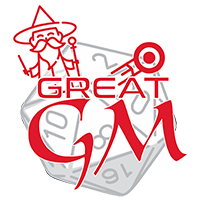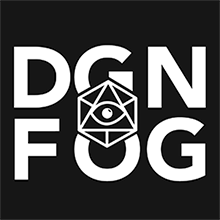Dungeons & Dragons 5e Class Features : Summoner
Remove these ads. Join the Worldbuilders Guild
Homebrew
Summoner
You start with the following equipment, in addition to the equipment granted by your background:
If you forgo this starting equipment, as well as the items offered by your background, you start with 5d4 x 10 gp to buy your equipment.
1st-level summoner feature Through training and discipline either from a master or parent you have learned the art of crafting and imbuing those very crafts with your magical power allowing them to move.
CANTRIPS
At 1st level you know 2 cantrips of your choice from the Summoner spell list. You can learn additional summoner cantrips of your choice at higher levels, as shown in the Cantrips Known section of the Summoner table. When you gain a level in this class, you can replace one of the summoner cantrips you know with another cantrip from the summoner spell list.PREPARING AND CASTING SPELLS
The Summoner table shows how many spell slots you have to cast your summoner spells. To cast one of your summoner spells of 1st level or higher, you must expend a slot of the spell's level or higher. You regain all expended spell slots when you finish a long rest.
You prepare the list of summoner spells that are available for you to cast, choosing from the summoner spell list. When you do so, choose a number of summoner spells equal to your Charisma modifier + half your summoner level, rounded down (minimum of one spell). The spells must be of a level for which you have spell slots.
You can change your list of prepared spells when you gain a level in this class.
SPELLCASTING ABILITY
Charisma is your spell casting ability for your summoner spells, since your skills rely on coaxing your creations to do your bidding. You use your Charisma whenever a spell refers to your spellcasting ability. In addition, you use your Charisma modifier when setting the saving throw DC for a summoner spell you cast and when making an attack roll with one.Spell Save DC
= 8 + your proficiency bonus + your Charisma modifierSpell Attack Modifier
= your proficiency bonus + your Charisma modifierRIGHT TOOLS FOR THE JOB
You produce your summoner spell effects through your tools. You must have a spellcasting focus-specifically artisans tools you are proficient with-in hand when you cast any spell with their Spellcasting feature (meaning the spell has an "M" component when you cast it).RITUAL CASTING
You can cast a summoner spell as a ritual if that spell has the ritual tag and you have the spell prepared.SUMMONER SPELL LIST
Here's the list of spells you consult when you learn a summoner spell. The list is organized by spell level, not character level. If a spell can be cast as a ritual, the ritual tag (r) appears after the spell's name.
CANTRIPS
- Acid splash - Booming blade - Create bonfire - Dancing lights - Fire Bolt - Frostbite - Green-flame blade - Guidance - Light - Lightning lure - Mage hand - Magic Stone - Mending - Message - Poison spray - Prestidigitation - Ray of frost - Resistance - Shocking grasp - Spare the dying - Sword Burst - Thorn Whip - Thunderclap1ST LEVEL
- Absorb Elements - Alarm (r) - Catapult - Cure wounds - Detect magic (r) - Disguise self - Expeditious retreat - Faerie fire - False life - Feather fall - Grease - Identify (r) - Jump - Longstrider - Purify food and drink - Sanctuary - Snare (r) - Tasha's caustic brew2ND LEVEL
- Aid - Alter self - Arcane lock - Blur - Continual flame - Darkvision - Enhance ability - Enlarge/reduce - Heat metal - Invisibility - Lesser restoration - Levetate - Magic mouth (r) - Magic weapon - protection from poison - Pyrotechnics - Rope trick - See invisibility - Skywrite (r) - Spider climb - Web3RD
- Blink - Catnap - Create food and water - Dispel magic - Elemental weapon - Flame arrows - Fly - Glyph of warding - Haste - Intellect fortress - Protection from energy - Revivify - Tiny servant - Water breathing (r) - Water walk (r)4TH
- Arcane eye - Elemental bane - Fabricate - Freedom of movement - Leomund's secret chest - Mordenkainen's faithful hound - Mordenkainen's private sanctum - Otiluke's resilient sphere - Stone shape - Stoneskin - Summon construct5TH
- Animate object - Bigby's hand - Creation - Greater restoration - Skill empowerment - Transmute rock - Wall of stoneSummoning Medium Summoners learn how tosummon creatures from other realms and planes. They also have the unique talent of being able to imbue their handmade creations with life. A summoner can choose from a number of creative talents that will be the medium for their power. They can imbue their creations with magic power causing them to come to life for a short time. Bond Beginning at 1st level, your knowledge and understanding of the planes and their inhabitants allows you to create a permanent bond with a type of creature. Choose a Bond, which will determine some of your summons, as well as the features you get at 1st, 6th, 11th, 15th, and 20th level. Requisition At 1st level, your new magics allow you to call forth aid. By expending Requisition Points you may summon a creature as an action. The number of Requisition Points you have are shown on the Summoner table in the Requisition Points column, with all expending points being refreshed at the end of a long rest. You may only summon one creature at a time, which stays on your plane for number of minutes equal to your Intelligence modifier or until it drops to 0 hp, which ever comes first. Additionally, summons act on their own turn and will act on their own will unless ordered not to. The following chart tells you the cost of summoning creatures at each CR, with you Bond telling you the type you may summon. Summoning Costs CR Requisition Point Cost 1/8-1/4 1 1/2 2 1 3 2 4 3 6 4 8 5 10 6 12 7 14 8 16 9 18 10 20 Permanent Binding Once you reach 3rd level, you can permanently bind a creature to your plane. When summoning a creature, you may decide to reduce the total number of Requisition Points you have by twice the amount it costs to summon the creature, causing the creature to stay summoned until it dies. This reduction ends once the creature dies as well. Ability Score Increase When you reach 4th level, and again at 8th, 12th, 16th and 19th level, you can increase one ability score of your choice by 2, or two ability scores of your choice by 1. As normal, you can't increase an ability score above 20 using this feature. Soultap at 5th level, You lean how to tap into your own vitality in order to power your Summons. As a bonus action, you may sacrifice 10 hit points to regain one Summon Point. You cannot sacrifice more or less than 10 hit points per use of this ability, and cannot regain more than one Summon Point per use of this ability. After using this ability you must complete a long rest before using it again. You gain an additional use of this ability at levels 8 and 14. Life Bond At 7th level, your life becomes intertwined with that of your eidolon. Whenever your eidolon takes damage, you may use your reaction and sacrifice a number of hit points from your current total. When you do so, you reduce the damage of the triggering attack by an amount equal to the number of hit points you sacrificed. You may not reduce yourself to 0 hit points with this feature. Swarm Summoner Starting at 7th level, you may call upon multiple creatures at a time. So long as you have the Requisition Points necessary, you may summon a number of creatures equal to your Intelligence modifier (minimum of 1). Soul Linked Casting You and your companion are of the same soul, and you can channel magic through your link. At 5th level, when you cast a spell targeting yourself, you can choose to also have the spell affect your companion if the companion is within 60 feet of you. If you lose concentration on the spell, you both lose the effect, and you must make concentration checks also if your companion takes damage, as if you took that amount of damage. Soul Shield At 11th level you can use some of your magic to shield your companion from attacks. When your companion takes damage while within 60 feet, you can use your reaction to grant it resistance to that damage. Additionally you can now transfer damage to your companion via the "Symbiotic Link" feature, without needing to use your reaction. Empowered Summons Once you reach 14th level, that which you summon is empowered. All creatures you summon gain a +1 to all damage and attack rolls, and gain a number of temporary hit points equal to half your level rounding down. Call to Arms At 18th level, you become capable of constantly summoning creatures. You regain Half your Requisition Points on a short rest, and 4 Requisition Points every time you roll initiative.
Bonds Sculpter Scuplters use figures they have sculpted out of stone to summon temporary souls into their stone creations. At 1st level you can at 2nd level you can imbue your sculpters with a temporary life. Carver Carvers use figures they have carved out wood to summon temporatry souls into their wood creations. at 1st level you can at 2nd level you can imbue your carvings with a temporary life. Artist Artists can summon temporary sould into their art work. Artists create in many different ways. Some can summon souls into their paintings, or drawings at 1st level you can at 2nd level you can imbue you art with temporary life causing it to jump of the canvas or page. Ink Witch Ink Witchs are rare among summoners. They have mastered the art of summoning stronger and larger creatures by carving or tattooing them into their own fleshusing their own flesh an bone to summon creatures of flesh and bone. Though they can not summon creatures as often or as long as summoners who conjure from the material. at 1st level you can at 2nd level you can imbue your tattoo or marking with a temporary life causing it to extract itself from your flesh. Fleshers are very rare among summoners. They are the few who tow the line of necromancy. They use the flesh or bodies of others, typically the dead to alter and redesign them or to carve the creature they want out of them. Few can use the life force of another living creature though if they creature is willing some have the power to do it after much practice. (this class is for DM use only or can be used by a player at the dicrestion of the DM.) at 1st level you can at 2nd level you can imbue your corpse art with a temporary life causing it to reshape the flesh it is carved into and mimicing the creature you imagined.





